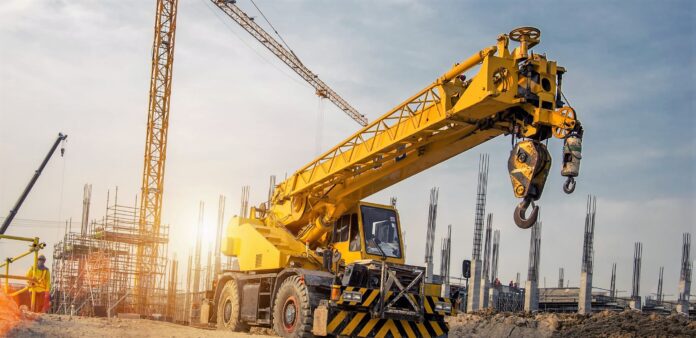The Shift in the Construction Industry
The construction industry is on the verge of a major shift as autonomous and semi-autonomous construction equipment becomes a reality. Similar to self-driving cars, these machines can operate themselves or be remotely controlled with the help of 3D maps, sensors, cameras, and satellite systems like GPS. The technology behind these machines is complex and sophisticated, but the impact they will have on the industry is immense. This technology will lead to safer job sites and more efficient and accurate work, marking a new era in the construction industry.
Advantages of Autonomous Construction Equipment
The advantages of autonomous and semi-autonomous equipment are many, one being the ability to hire less-experienced workers due to the reduced learning curve for operating these machines. Skilled operators will still be needed to teach the machines and to monitor their work, but the technology will allow employers to hire a wider range of workers. With real-time monitoring of the equipment’s performance, operators can ensure that work is being done accurately and efficiently. Furthermore, autonomous equipment can help address the worker shortage that the construction industry is currently facing.
Leading Manufacturers in Autonomous Construction Equipment
Heavy equipment manufacturers like Komatsu, Caterpillar, Case CE, and Volvo CE are investing in autonomous construction equipment. Each of these companies has developed its own technology to meet the growing demand for autonomous equipment in the industry. Komatsu’s Intelligent Machine Control (IMC) allows fully automatic blade control for dozers, while Caterpillar’s CAT Command technology provides remote and semi-autonomous operation. Case CE’s SiteSolutions combine telematics and machine control solutions, and Volvo CE is working to create emission-free equipment with zero accidents. These manufacturers are leading the way in the development of autonomous construction equipment.
The Future of Autonomous Vehicles in Work Zones
Autonomous vehicles are not just limited to construction equipment. They are also making their way onto work zones for road construction projects. For example, Royal Truck & Equipment is piloting a program with the Florida DOT that removes drivers from behind the wheel of crash trucks. The unmanned crash trucks follow a lead vehicle that transmits GPS data, allowing the trucks to operate safely. The potential for autonomous vehicles in the construction industry is vast, and this is just the beginning.
The Potential Challenges and Opportunities of Autonomous Construction Equipment
While autonomous construction equipment offers many advantages, it also poses some challenges. The initial cost of these machines is high, which may deter some contractors from investing in them. Additionally, the technology is still in the early stages of development, and there may be regulatory hurdles to overcome before autonomous machines can be widely used. However, the opportunities that autonomous construction equipment presents are significant. As the technology advances and becomes more widely adopted, it has the potential to revolutionize the construction industry and pave the way for even more innovation in the future.
The Role of Skilled Operators in the Future of Construction
Despite the rise of autonomous construction equipment, skilled operators will continue to play an important role in the industry. As more autonomous and semi-autonomous machines are deployed on job sites, operators will be needed to monitor their work and ensure that it is being done safely and efficiently. Experienced operators will also be needed to teach the machines and to take control if something goes wrong. Moreover, as the labor pool for construction workers continues to shrink, skilled operators will become even more valuable. They can help to train new workers and ensure that they are capable of operating these advanced machines safely and efficiently.
The Future of Construction: Technology and People
The development of autonomous construction equipment is just one example of the many ways that technology is transforming the construction industry. From drones and 3D printing to augmented reality and virtual reality, there are many innovative tools and technologies that are changing the way that construction projects are designed, planned, and executed.
As the industry continues to evolve, contractors and construction firms will need to stay up-to-date with the latest technologies and trends in order to remain competitive. This may require investing in new equipment, hiring new staff with specialized skills, and adopting new processes and workflows to take advantage of emerging technologies.
However, it is important not to lose sight of the importance of skilled workers in the construction industry. While technology can help to improve safety, efficiency, and productivity, it is ultimately the people who work in the industry who make the real difference. As the industry continues to evolve, it will be important to balance the benefits of technology with the need to maintain a skilled and experienced workforce.
Conclusion
The rise of autonomous construction equipment is an exciting development for the construction industry. While there are still challenges to overcome, the potential benefits of this technology are significant. With the ability to improve safety, efficiency, and productivity, autonomous machines represent a major opportunity for contractors and construction firms.
At the same time, it is important to recognize the role that skilled workers will continue to play in the industry. As the labor pool for construction workers continues to shrink, the need for skilled operators and workers will only increase. By investing in both technology and people, the construction industry can continue to thrive and grow in the years to come. The future of construction is indeed a partnership between technology and people.















